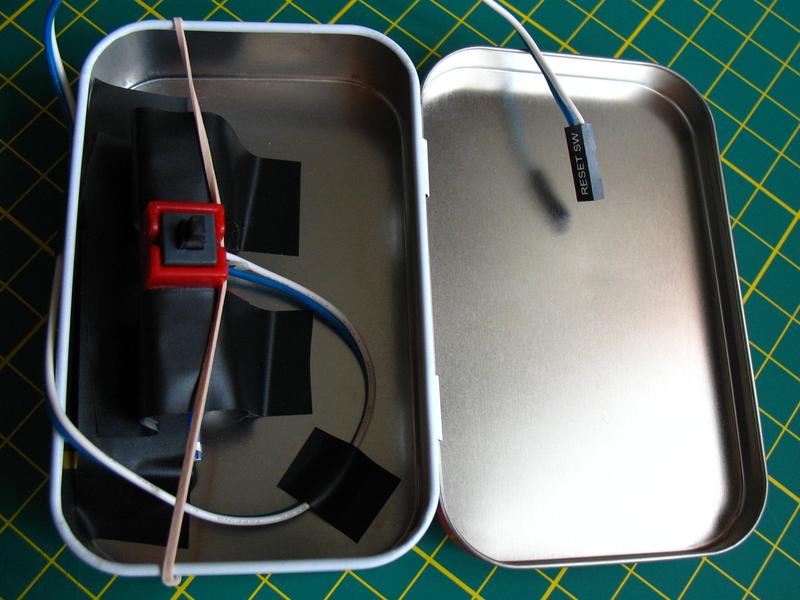Tab Stomper prototype 1 (V-USB, Arduino)
2018-02-19Hardware
The entire contraption looks like this:
 The Arduino Uno (R2) is the brains of the operation, USB is dealt with by my V-USB development board, and the user interface is a janky foot switch.
Everything is connected with jumper wires, and there are no additional electronic components, so there's no sense in drawing a circuit.
The Arduino Uno (R2) is the brains of the operation, USB is dealt with by my V-USB development board, and the user interface is a janky foot switch.
Everything is connected with jumper wires, and there are no additional electronic components, so there's no sense in drawing a circuit.
The Arduino's 5V and GND pins are connected to VBUS and GND on the V-USB board.
As the Arduino is powered by the circuit, its USB and power connectors are left unplugged.
Digital pins 2, 3, and 4 go to D+, PU, and D-.
The first of these is more or less non-negotiable, because D+ needs to go to INT0, and that happens to be pin 2.
The V-USB default for D- is the nearby pin 4, and I've put the pull-up pin between them.
Finally, the switch is connected to digital pin 5 and ground.
When the switch is pressed, it pulls the pin low; when it's not, the internal pull-up resistor drives the pin high.
The foot switch is a reset button from an old computer case mummified in an Altoids tin with electrical tape:
 The standard motherboard connector on the end of the switch cable is perfect for jumper wires.
For best results, the switch is angled to sit perpendicular to the lid:
The standard motherboard connector on the end of the switch cable is perfect for jumper wires.
For best results, the switch is angled to sit perpendicular to the lid:
 It is crucial to stomp lightly.
It is crucial to stomp lightly.
Firmware
The firmware is based on Objective Development's V-USB, which makes prototyping low-speed USB devices a breeze. Since the library does all the heavy lifting, the firmware is very straightforward. It can be found on GitHub: https://github.com/0/tab-stomper-vusb. It is licensed under version 3 of the GPL.
The tab will typically not be aligned with the screen, so it's not sufficient to only send PageDown, as parts of the tab may end up cut off.
To compensate, the firmware immediately sends UpArrow several times to make the overall displacement slightly less than a screenful.
The implementation is a very simple state machine:
- Wait for the switch to be pressed.
- Press
PageDown. - Release
PageDown. - Loop:
- Press
UpArrow. - Release
UpArrow.
- Press
- Debounce.